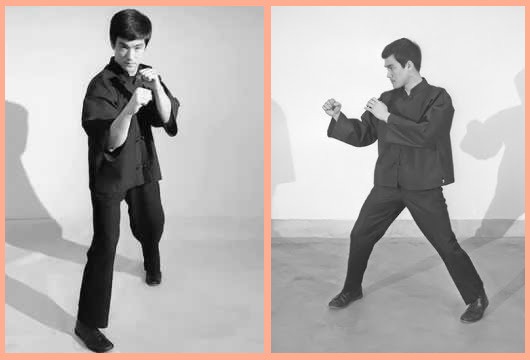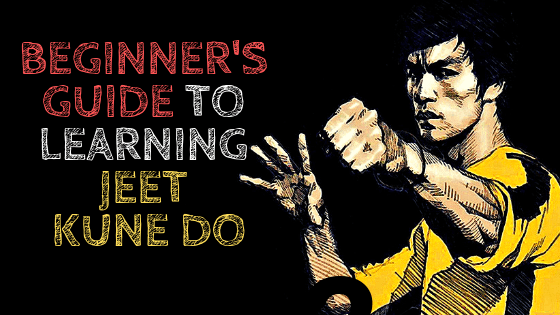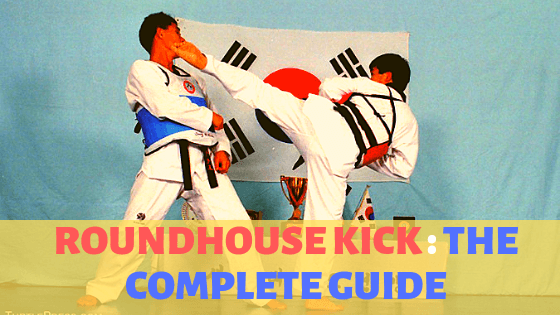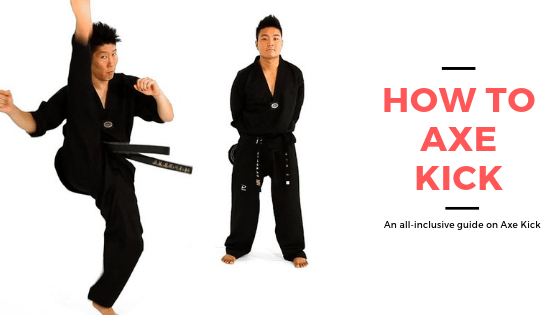Jeet Kune Do, or else “ the way of the intercepting fist” as it translates to, is a hybrid martial art invented by Bruce Lee with a strong philosophy behind it.
It combines elements of Wing Chun, western boxing, and fencing. Unlike other martial arts, it follows no specific routines.
Your goal is to intercept an attack with another attack. Mental preparedness, adaptability, speed, and mobility are essential, and they come with practice.
The main principles behind JKD are simplicity, directness, and freedom.
With that in mind, you are called to defeat your opponent as fast as possible, using minimum energy and moves.
Eventually, Jeet Kune Do’s higher purpose is to teach you how to adopt these principles as a way of life and free yourself from all that weighs you down.
In this post, we’ll acquaint you with the basic JKD moves and the principles behind them.
Then, we’ll give you basic pointers to help you practice simple variations of these moves at home!
쉬운 목차
1. Jeet Kune Do principles
We mentioned above that JKD follows three basic principles: efficiency, directness, and freedom. But what does each one mean? Efficiency, put simply, suggests that the attack should be successful and reach its mark.
Directness encourages you to do what comes naturally in a disciplined way.
And freedom lies in the fact that Jeet Kune Do practitioners are freed from patterns and structures that other martial art practitioners follow.
Instead, they perform the moves that work best for them. All three principles serve the concept of economy of motion, which means reducing unnecessary movement to maintain your energy.
Another cornerstone principle of JKD is adaptability, best described by Bruce Lee as “be like water.”
A skill that can be used in any real-life situation and not just in combat, it refers to a person’s ability to adapt to any circumstances and react accordingly without following preexisting notions.
2. Jeet Kune Do “economy of motion” moves
Unnecessary and complicated moves that require high energy are not welcome in Jeet Kune Do. Every move must be simple and efficient. Remember, your goal is to weaken your opponent fast and for good while keeping your energy and strength high.
1. Stop hits and kicks: At the heart of JDK lies the idea that the best way to intercept an opponent’s attack is by stopping it before it even starts, not by blocking it.
2. Simultaneous parrying and punching: This is basically defense/offense, entering into “attack mode” while simultaneously defending yourself.
3. Low kicks: They are preferred to high kicks because they make the opponent lose their stability and fall.
4. Non-telegraphed punches: Catch your opponent off-guard by keeping your arms and body relaxed until the moment you start your attack.
5. Stances: Strictly speaking, a stance is not a move. However, assuming the correct stance is essential for your body to perform an efficient counter-attack.
6. Footwork: A variety of moves including sliding, pivoting, and circling that keep your body and mind alert. Footwork facilitates both attack and defense, and it makes your opponent nervous!
3. Jeet Kune Do benefits
1. Self-defense skills: Jeet Kune Do practitioners are able to stop an attack before the attacker can even complete their move, and strike back within seconds. Definitely an impressive self-defense technique.
2. Higher confidence: JKD is an excellent exercise that improves flexibility and strength, with the added benefit of self-defense. How can you not feel more confident?
3. Body balance and agility: Because you have to prevail over your opponent using only a few moves, your body learns how to coordinate these moves perfectly so that they are executed fast.
4. Increased alertness and lower reaction time: JKD trains your mind to be alert and ready to counter-attack your opponent before they finish their attack. In time, this will increase your ability to respond to unexpected situations.
5. Adaptability: Adaptability is highly valued and encouraged in Jeet Kune Do. No two opponents are the same. No two methods of attack are the same.
Therefore, there’s no predefined path to follow in response. You learn to adapt your defense based on your opponent, and on what your body can do.
The same rule applies in life – you never know what comes next. You must adapt to each situation, let go of rigid thinking, and react accordingly.
4. Practicing Jeet Kune Do at home
It goes without saying that to master Jeet Kune Do, you must attend classes. There’s no harm in doing some extra Jeet Kune Do training at home, though.
Even if you haven’t practiced Jeet Kune Do before, these exercises will help you get started with some basic moves. Do some stretching to warm up your muscles, and you’re ready to go!
Basic stance
Assuming the Jeet Kune Do stance is essential if you want your body to be ready for an attack or defense. It will also give your opponent as few targets to attack as possible.
So, start with leading with your dominant foot turning it slightly inwards, making sure you keep it parallel to the other foot. Both knees should be slightly bent.
Have your whole body face the same way and keep your arms close to your ribcage and at chin level, with your hands closed into fists.
Great, you have now entered the basic Jeet Kune Do stance and are ready to practice your moves!

Punch like Bruce Lee!
One-inch punch: Maybe the most iconic punch of all. With a surprisingly small movement of no more than one inch, you can send your opponent on their way, literally.
The theory behind it is a mathematical principle – the shortest distance between two points is a straight line.
Or, in Bruce Lee’s words, “Simplicity is the shortest distance between two points.” Practically, you need to have the correct distance (three to six inches) from your target, keep your wrist straight, and strike fast.
To practice this punch, you’ll need a paper bag hanging from a string, or a partner. First, make sure you have assumed the right stance.
You should be able to touch your target when you straighten your arm without having to lean forward, and your elbow should be bent at a 45-degree angle.
Your punching foot should be forward and your non-punching foot behind you. Stay close to your target, make a fist with your wrist turned upwards, and strike at chest-level, throwing your body weight in to increase the power of the punch.
Snapping punch: Another Bruce Lee signature punch. An explosive punch that is executed fast and unexpectedly, where you hit your target and immediately return to the guard position.
Again, you’ll need a paper bag or a partner for your practice. Lean forward and keep your lead foot firmly on the ground while you strike your punch.
You don’t need to put a lot of power to the strike. You want to have minimum contact with the target, so speed and agility are your weapons here.
Your goal is to snap a hole in the bag, penetrating just a couple of inches. During the practice, you can keep your fists in a vertical position.
As you grow more confident, you can start turning them over.
Low kicks
A hit to your opponent’s leg and morale, since a successful low kick can make them lose their balance and end up on the floor with legs too weak to stand up.
If you want to practice your defense at the same time, use a partner.
Keep your legs slightly bent, then step forward and at the same time pivot your front foot open to increase the power of the impact, and kick!
You must perform the kick with your shin instead of your foot, otherwise you might hurt yourself.
You can keep your hands up to defend yourself. Or, you can be more sneaky about it and catch your opponent off guard by throwing a punch at the same time.
The punch will distract them, and they won’t see the low kick coming.
Footwork drills
Mobility and speed are essential in Jeet June Do, and footwork offers precisely that.
Use it as a part of your attack strategy to puzzle your opponent, and to make their life harder by not being an easy target yourself.
JKD footwork involves a wide variety of moves. Instead of analyzing those, we found it more useful to suggest a few drills that will improve your footwork on a physical and on a mental level, too.
1. Jump rope: Yeap, one of the kids’ favorite activities will help you gain full control of how you move your lower body, increase your stamina and agility.
Apart from the classic up-and-down jumping, you can also practice side-to-side and forward-backward.
2. Ladder drills: Get one from the store or make your own agility ladder, and train your legs to move in any possible direction with speed, agility, and fluidity.
3. Shadowboxing: If there’s one drill you can do at home by yourself, it’s this. All you have to do is throw punches in the air at an imaginary enemy.
Shadowboxing in front of a mirror will help you spot mistakes in your technique. It’s also a great way to mentally prepare for combat – plus, visualizing yourself as the winner boosts your morale!
Jeet Kune Do is an amazing martial art and philosophy that teaches a lot more than self-defense. Embrace its true spirit and let it guide you towards living a simple and uncomplicated life, free of mental restraints and unnecessary clutter.









